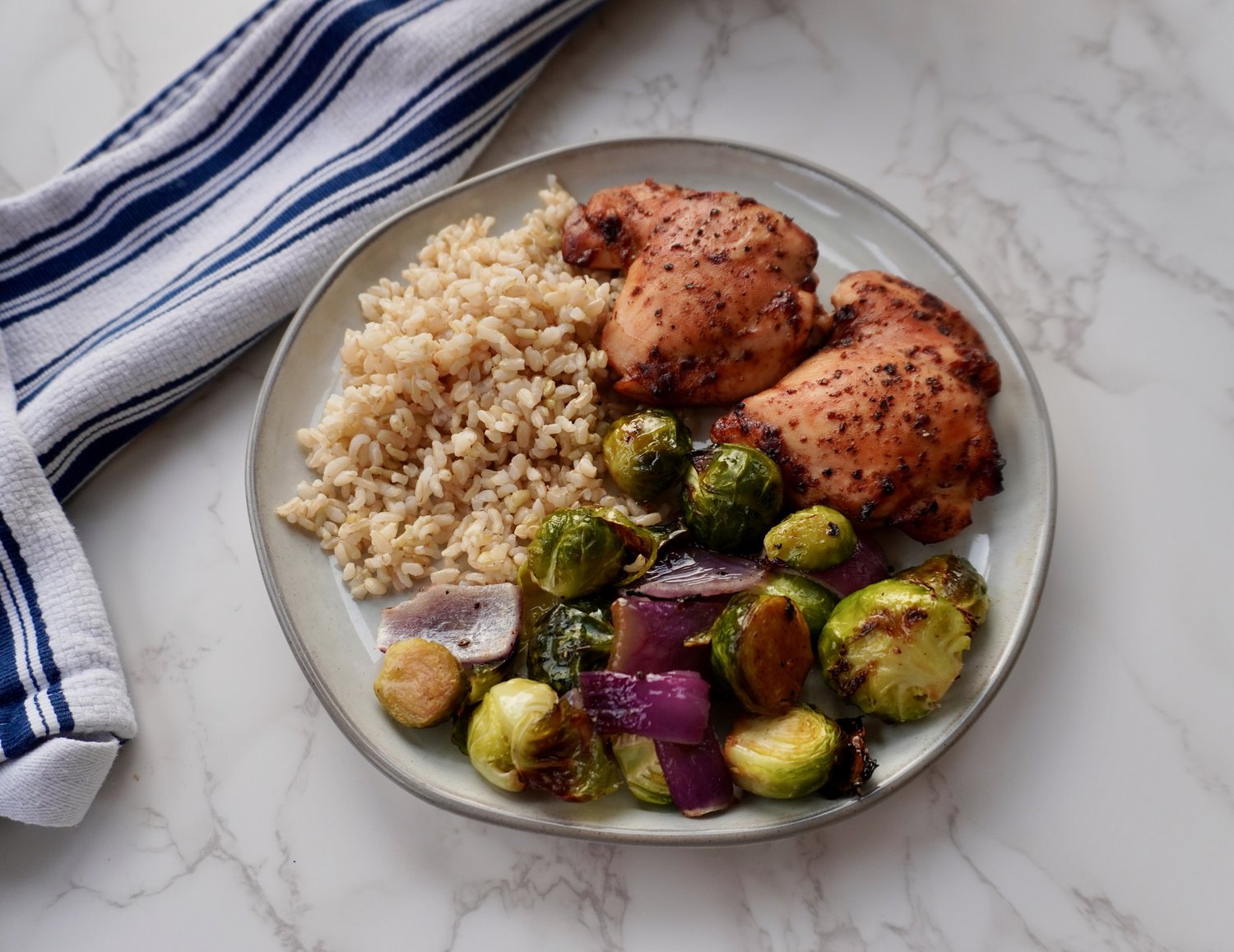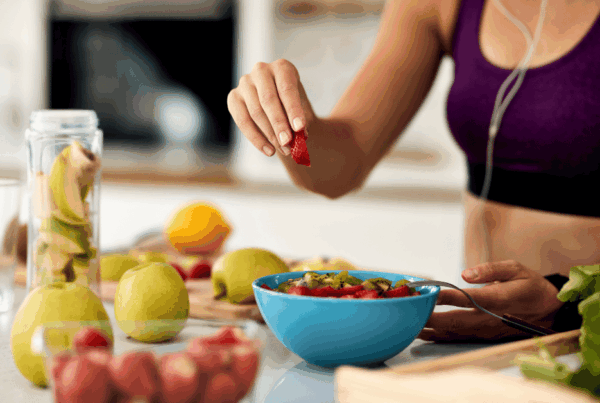Sheet pan dinners are a lifesaver for busy athletes. Simply toss your favorite protein, such as chicken breast, salmon, or tofu, with an assortment of vegetables like broccoli, brussels sprouts, onions, bell peppers, or sweet potatoes on a baking sheet. Season everything with some fresh or dried herbs, spices, and a drizzle of olive oil, then pop it in the oven. In just 20-30 minutes, you’ll have a complete meal ready to enjoy, with minimal cleanup required.
Honey Mustard Chicken Thigh Sheet Pan
Makes 4 servings (2 servings for weight gain plan)
Ingredients:
1 lb boneless skinless chicken thighs
Salt and pepper to taste
⅓ cup extra virgin olive oil (divided)
2 Tbsp dijon mustard
1 Tbsp honey
1 Tbsp lemon juice
3 cups brussels sprouts (trimmed and halved)
½ cup red onion (cut into wedges)
Directions:
-
Preheat the oven to 425 F. Line a baking sheet with parchment paper. Season chicken thighs with salt and pepper.
-
In a large bowl, whisk together ⅓ of the oil, mustard, honey, and lemon juice. Add the chicken to the mixture, coating all sides. Place on a baking sheet and bake for 25 minutes.
-
While the chicken is cooking, toss the onion and brussels sprouts with the remaining oil and salt and pepper.
-
Remove the baking sheet and spread the Brussels sprouts and onion around the chicken. Bake for another 15 minutes, until the sprouts are charred and the chicken is cooked through.
-
Serve with rice, quinoa, or roasted potatoes.
.
.
.
#5Day #Simple #Weeknight #Meal #Plan #Eleat #Sports #Nutrition
Source link








